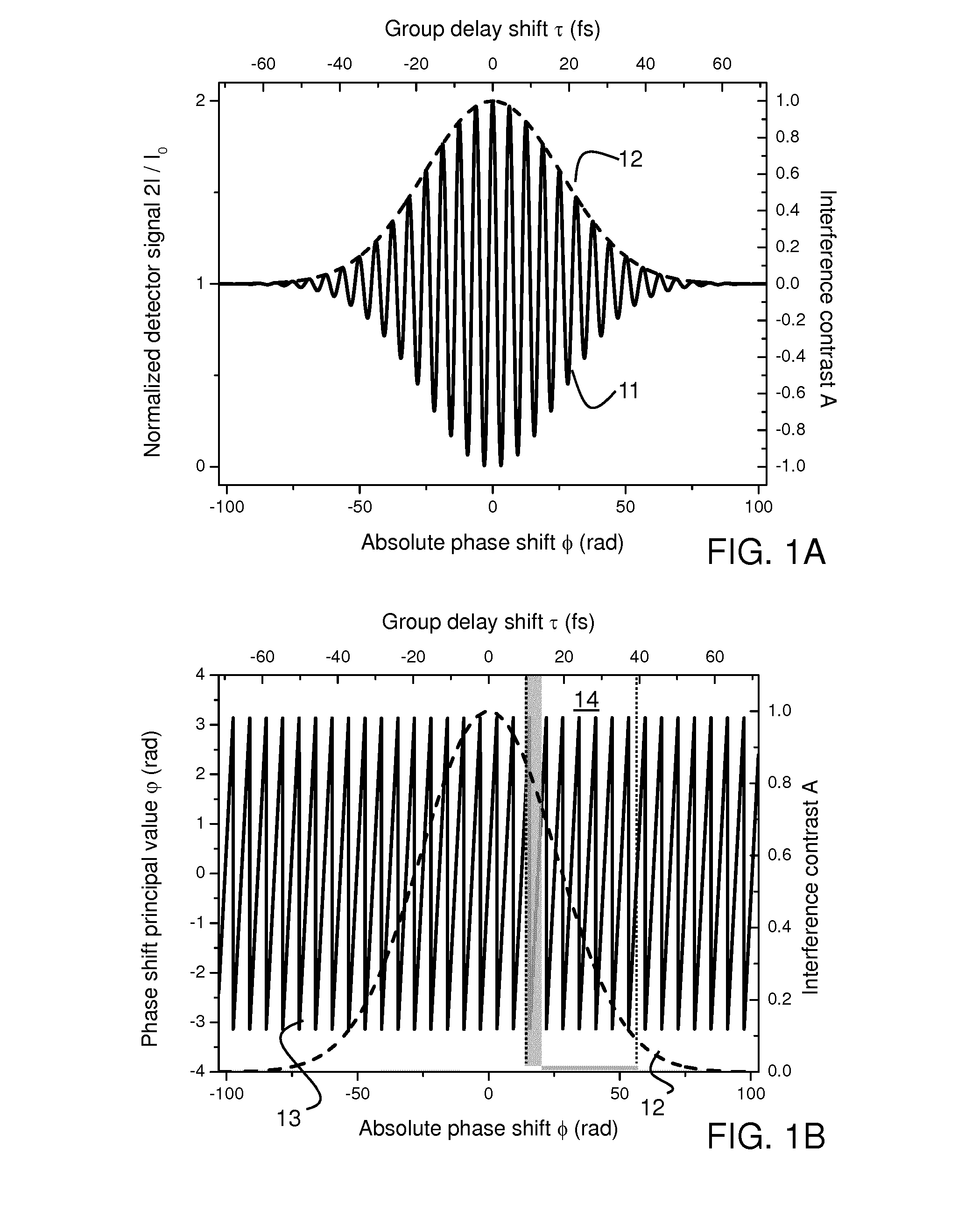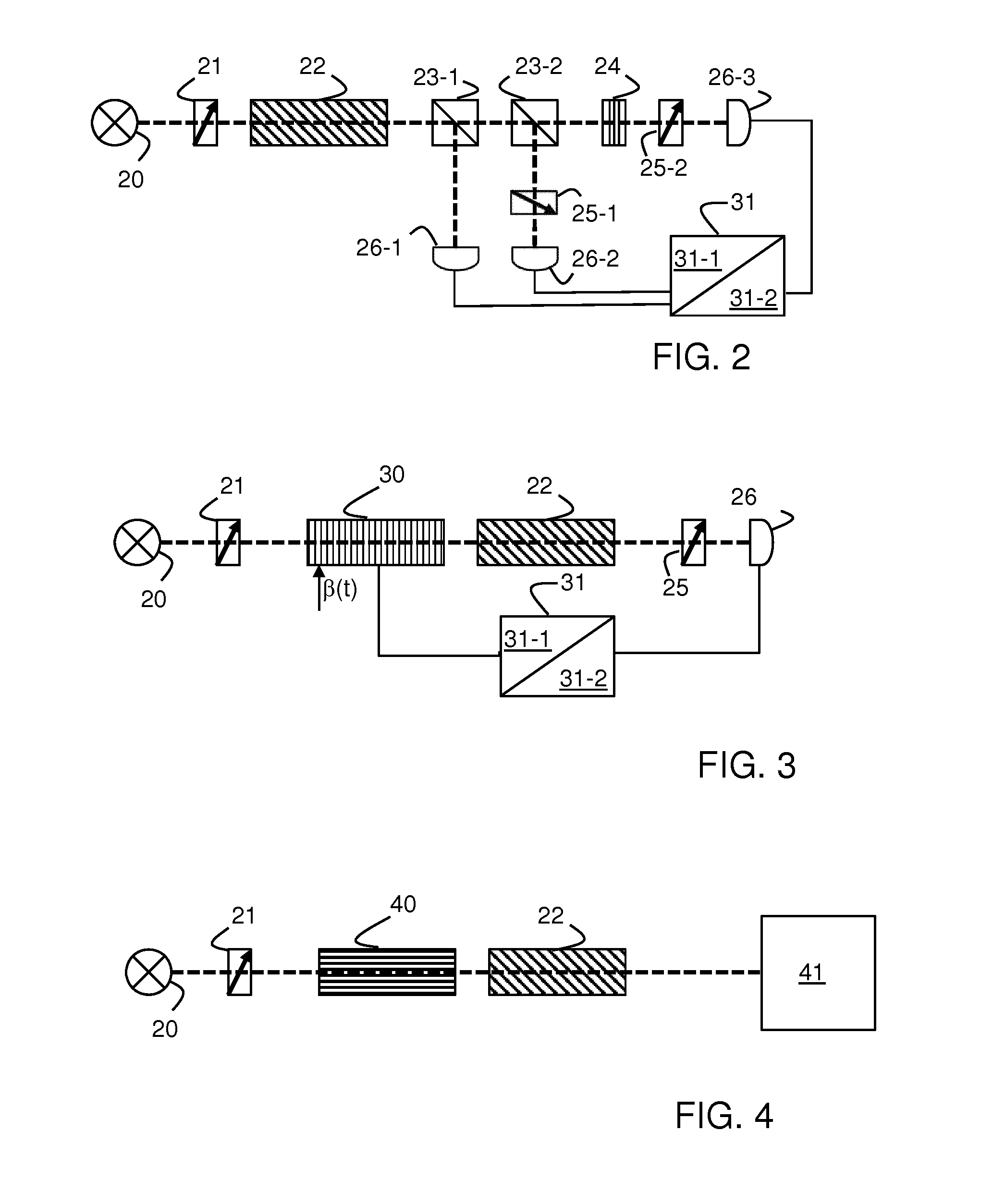Interferometric sensor
a sensor and interferometer technology, applied in the field of interferometer sensors, can solve the problems of difficult to distinguish voltage or current drift from other effects, fundamental limit to the achievable measurement range, and periodwise ambiguity, so as to increase the unambiguous measurement range of an interferometer sensor. the effect of removing period ambiguity
- Summary
- Abstract
- Description
- Claims
- Application Information
AI Technical Summary
Benefits of technology
Problems solved by technology
Method used
Image
Examples
Embodiment Construction
[0036]In the following, the example of an orthogonal-polarization interferometer is used to describe steps of signal handling or processing used in the present invention. It should be noted that the underlying principles of the example described apply to many different types of interferometric sensors otherwise suffering from period-wise ambiguity. Hence they can actually be applied to any types of interferometers (Michelson, Mach-Zehnder, Fabry-Perot, Sagnac, etc.), with only minor differences in implementation or interpretation. Typically, in an interferometer the optical detector signal after the interference can be written as the sum of a base term, which is proportional to the output power of the light source, and a sinusoidal term which varies with the phase shift φ between the interfering waves as influenced by the measurand. In addition, the interference of non-monochromatic waves introduces a further modification Aτ to the detector signal which is related to the temporal co...
PUM
 Login to View More
Login to View More Abstract
Description
Claims
Application Information
 Login to View More
Login to View More - R&D
- Intellectual Property
- Life Sciences
- Materials
- Tech Scout
- Unparalleled Data Quality
- Higher Quality Content
- 60% Fewer Hallucinations
Browse by: Latest US Patents, China's latest patents, Technical Efficacy Thesaurus, Application Domain, Technology Topic, Popular Technical Reports.
© 2025 PatSnap. All rights reserved.Legal|Privacy policy|Modern Slavery Act Transparency Statement|Sitemap|About US| Contact US: help@patsnap.com



